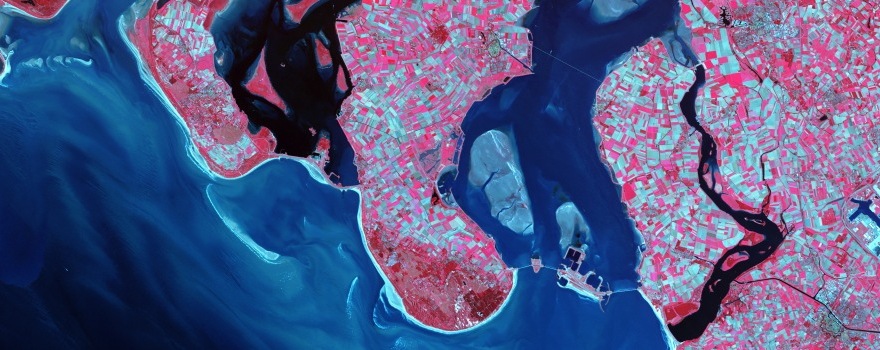
In science news this week:
The fish doctor: “She wanted to work with people – be a nurse, maybe even a doctor.Then, a college course about salmon – in the wild, not on the plate – changed Kimberly True’s life. The future of the 1980s college student took a hard turn, abandoning a potential career in human health to pursue one devoted to raising healthier fish. “I got really excited about them and thought they were amazing creatures,” she said, describing the salmon’s lengthy trek to the ocean and its marathon return riddled with obstacles. “They really work very hard to survive.” … ” Read more from the US Fish & Wildlife Service here: The fish doctor
CA Department of Fish & Wildlife Herring Surveys: “On a drizzly winter day in San Francisco Bay, you might find CDFW Environmental Scientist Ryan Bartling surveying the shoreline on the research vessel Smoothhound in search of Pacific Herring (Clupea pallasii) eggs. Bartling is one member of a team of state biologists who monitor the San Francisco Bay Herring fishery in the winter months, counting eggs and using those numbers to estimate the size of the Herring population that enters the Bay each season. CDFW Environmental Scientists Tom Greiner and Andrew Weltz are the other members of the Herring Team who lead the collection of biological data and management of commercial take of Herring in San Francisco Bay. … ” Read more from the CDFW here: CDFW Herring Surveys
Lessons from a butterfly basket: “Surrounded by blue skies and the vast open desert, Spike Jackson, a tribal member and environmental director for the Timbisha Shoshone Tribe, described a large woven basket ordained by geometric orange and black butterflies. “The basket was handcrafted by my great-great aunt, who lived here (Saline Valley) at one time,” Jackson said. “The butterflies must have been significant to my ancestors, but I don’t know why and I’d like to know.” The Timbisha Shoshone, a federally recognized tribe, historically occupied millions of acres across Eastern California and Western Nevada, including the infamous Death Valley and an adjacent valley, known as Saline Valley. … ” Read more from the US Fish & Wildlife Service here: Lessons from a butterfly basket
Roaches of California: Hidden Biodiversity in a Native Minnow: Dr. Peter Moyle writes, “If you inspect small streams in northern California, including those that seem too small or warm for any fish, you will often see minnows swimming in the clear water. Chances are you are seeing a very distinctive native Californian, usually called California roach. This fish is a complex of species that occurs as far north as Oregon tributaries to Goose Lake and is widespread in tributaries to the Sacramento and San Joaquin rivers, as well as in rivers along the coast from the Eel River to Monterey. ... ” Read more from the California Water Blog here: Roaches of California: Hidden Biodiversity in a Native Minnow
Diets of Baby Giants: Feeding Habits of Larval Green Sturgeon: “For little larval fish, access to high-quality prey is the key to growing quickly, and growing quickly is the key to survival. Baby fish rely on eating tiny invertebrates and plankton, and the abundance and diversity of this “fish food” can be influenced by the temperature and amount of flow in a river. Releasing cold water from reservoirs is an important part of managing salmon populations during the notoriously hot, dry summers of California’s Central Valley to increase flows and keep rivers cool. However, it’s not well understood how these releases may affect the little animals at the bottom of the food web, as well as the larval fish that depend on them. Furthermore, few studies have examined the dietary needs of many fish species during their larval stage, and for some like the green sturgeon (Acipenser medirostis), which is listed as threatened under the Endangered Species Act, this lack of knowledge can hinder conservation. ... ” Read more from FishBio here: Diets of Baby Giants: Feeding Habits of Larval Green Sturgeon
Study: Can fish evolve to handle climate change? Scientists tested it on these oddball fish: “The grunion is a weird little fish. Grunion are perhaps best known for washing up on California beaches — from Baja California all the way up to Monterey Bay — several times a year to spawn en masse for hours, starting on a night with a full or new moon, according to the California Department of Fish and Wildlife. The creatures travel as far up a beach as waves will carry them, and then females dig nests and lay thousands and thousands of eggs. Males come ashore, too, and fertilize the eggs — and then males and females alike return to the ocean, sometimes in less than a minute, the state fact page on the species says. ... ” Read more from the Merced Sun-Star here: Study: Can fish evolve to handle climate change? Scientists tested it on these oddball fish
New Project to Build Climate Resilience through Improved Land Management: “A $4.6 million grant to UCs Merced and Irvine will help researchers develop new tools and methods for better managing the state’s forests, shrub lands and grasslands. The Innovation Center for Advancing Ecosystem Climate Solutions, a three-year program co-led by UC Merced Professor Roger Bales and UC Irvine Professor Michael Goulden, was selected through the Strategic Growth Council’s competitive Climate Change Research Program. This program is part of California Climate Investments, a statewide program that puts billions of cap-and-trade dollars to work reducing greenhouse gas emissions, strengthening the economy, and improving public health and the environment — particularly in disadvantaged communities. … ” Read more from UC Merced here: New Project to Build Climate Resilience through Improved Land Management
Restoring the Colorado: Bringing New Life to a Stressed River: “From the air, the last gasp of the Colorado River is sudden and dramatic. The pale green river flows smack into the Morelos Dam on the U.S.-Mexico border, and virtually all of it is immediately diverted into a large irrigation canal that waters a mosaic of hundreds of fields — alfalfa, asparagus, lettuce, and other vegetables, their vivid green color clashing against the sere desert. The slender thread of water that remains in the Colorado’s channel continues to flow south, but is soon swallowed up by a sea of sand, far short of its delta, which lies 100 miles farther on. ... ” Read more from Yale 360 here: Restoring the Colorado: Bringing New Life to a Stressed River
Oxygen Sensitivity in Wetlands: Implications of Carbon Storage: “Blue carbon sinks are coastal ecosystems such as mangroves, marshes, and seagrass beds, that store carbon from the world’s oceans. Because these ecosystems store tons of carbon, it is important to understand how they will be altered in future environmental conditions. Oxygen availability may be an important driver in wetlands, which are primarily anoxic (little to no oxygen) ecosystems. With sea level rise, increased droughts, and shifting plant species, oxygen availability could increase respiration rates in these ecosystems and positively feedback to climate change. In this study, a literature search and an experimental mesocosm explored how changing oxygen availability may impact soil respiration rates. … ” Read more from EnviroBites here: Oxygen Sensitivity in Wetlands: Implications of Carbon Storage
Rating riverside corridors — the ‘escape routes’ for animals under climate change: “Under climate change, plants and animals will shift their habitats to track the conditions they are adapted for. As they do, the lands surrounding rivers and streams offer natural migration routes that will take on a new importance as temperatures rise. An open-access study led by the University of Washington pinpoints which riverside routes in Washington, Oregon, Idaho and western Montana will be the most important for animals trying to navigate a changing climate. The study was published this fall in PLOS ONE. … ” Read more from Science Daily here: Rating riverside corridors — the ‘escape routes’ for animals under climate change
Warming winters across the United States: “Daytime highs were in the negative teens in parts of the Upper Midwest and Great Lakes at the end of January, and the chill extended across much of the East. By the first week of February, temperatures in parts of the Mid-Atlantic and Southeast had plowed right past spring and into summer-like warmth. If the weather whiplash has left you wondering how U.S. winters are changing over time, the maps below tell the story. (Apologies Alaska, your statewide historical record doesn’t go far enough back to be included in these analyses). ... ” Read more from Climate.gov here: Warming winters across the United States
Maven’s XKCD Comic Pick of the Week …
 Sign up for daily email service and you’ll never miss a post!
Sign up for daily email service and you’ll never miss a post!
Sign up for daily emails and get all the Notebook’s aggregated and original water news content delivered to your email box by 9AM. Breaking news alerts, too. Sign me up!
About Science News and Reports: This weekly feature, posted every Thursday, is a collection of the latest scientific research and reports with a focus on relevant issues to the Delta and to California water, although other issues such as climate change are sometimes included. Do you have an item to be included here? Submissions of relevant research and other materials is welcome. Email Maven


